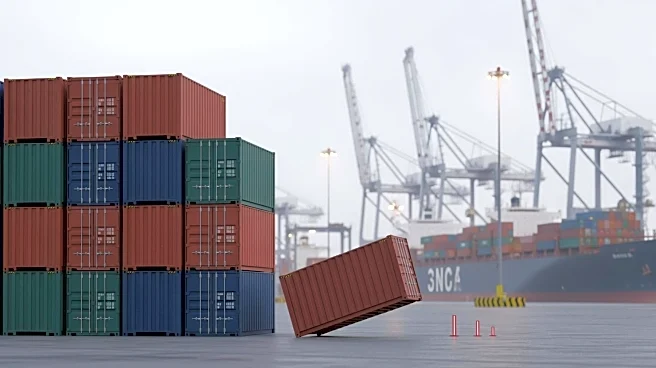What's Happening?
The chemical industry is experiencing significant financial distress, with debt levels rising dramatically due to oversupply from China and increasing energy costs. As of October 17, the amount of debt in the sector trading at a discount of more than
20% from face value has escalated to $29.4 billion, a substantial increase from $5.5 billion on November 1, 2024. This surge positions the chemical industry as the second-largest distressed sector, trailing only the real estate sector, which has $191 million of debt in distress. The software services sector follows closely with $24.5 billion in distressed debt.
Why It's Important?
The financial distress in the chemical industry has broad implications for the U.S. economy and global markets. The oversupply from China and rising energy costs are key factors contributing to the industry's challenges, potentially affecting employment and investment within the sector. Companies in the chemical industry may face increased pressure to restructure or seek bankruptcy protection, impacting suppliers, employees, and investors. The situation underscores the vulnerability of industries reliant on global supply chains and energy prices, highlighting the need for strategic adjustments to mitigate risks.
What's Next?
The chemical industry may need to explore restructuring options or seek financial assistance to manage the escalating debt levels. Stakeholders, including investors and policymakers, will likely monitor the situation closely to assess potential impacts on the broader economy. Companies may also consider diversifying their supply chains or investing in energy-efficient technologies to reduce costs. The industry's response to these challenges could set precedents for other sectors facing similar pressures.
Beyond the Headlines
The distress in the chemical industry raises questions about the sustainability of current business models in the face of global economic shifts. The reliance on international supply chains and fluctuating energy prices may prompt companies to reevaluate their strategies, potentially leading to innovations in production and supply chain management. Additionally, the situation may influence regulatory discussions on energy policy and trade relations, as stakeholders seek solutions to stabilize the industry.













